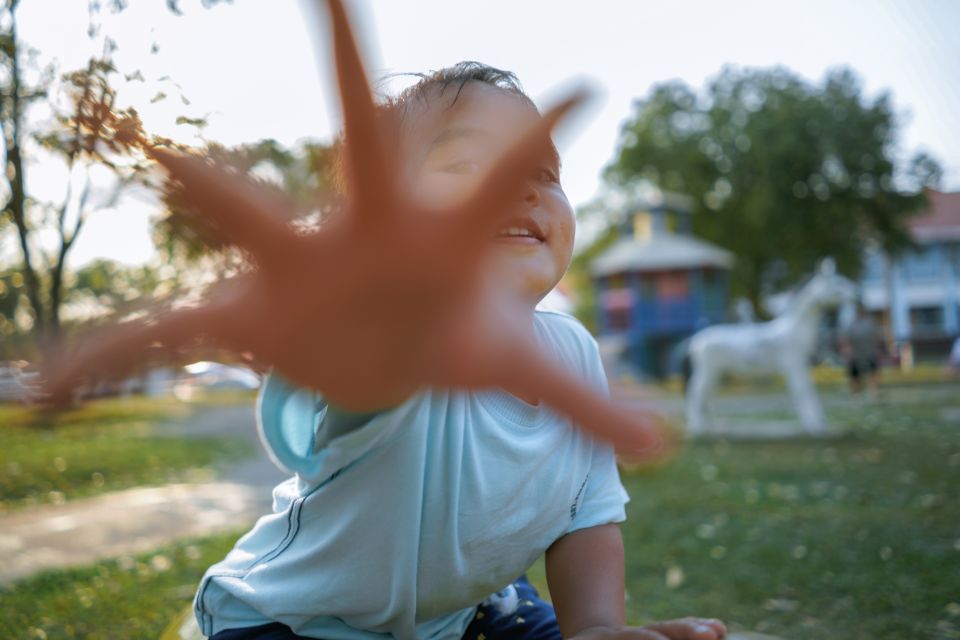Autism Spectrum Disorder (ASD) is a developmental disability. Here you will find out more about what it is and what to look for.

Autism spectrum disorder (ASD) is a “spectrum” developmental disability, which means that children with ASD have a wide range of strengths and needs. Autism can impact how a child interacts and engages with others. It can also affect how a child speaks, learns, and communicates with others.
The exact cause of ASD is still unknown, and signs can appear at different ages. Some parents might notice early indicators before 18 months. This may seem daunting. However, understanding that ASD is often a different way of processing the world can help.
Individuals with ASD can benefit from support and strategies to help them thrive. These may include speech-language therapy, occupational and physical therapy, and social skills development. Focusing on strengths and providing appropriate resources can greatly enhance the quality of life and learning experiences for those with ASD.

Studies show that early diagnosis and intervention services—while the brain is still developing—can significantly improve a child’s ability to learn and communicate by the start of kindergarten. Being aware of developmental milestones and early signs of autism can help parents and caregivers support their child's growth. Here are some behaviors that might indicate ASD, though professional evaluation is crucial:
By 6 months: Few big smiles or other joyful expressions, makes little or no eye contact
By 9 months: Little sharing of sounds, smiles, or facial expressions
By 12 months: Little babbling or back-and-forth gestures, limited response to name
By 16 months: Very few words
By 24 months: Very few meaningful two-word phrases
Starts talking later than age 2 or loses previously acquired ability to say words or sentences.
Speaks with an abnormal tone or rhythm, may use a sing-song voice or robot-like speech.
Difficulty relating to other people, prefers to be alone, and doesn’t like to cuddle.
Doesn’t play or has unusual play patterns, like spinning objects over and over.
Has unusual reactions to the way things smell, taste, look, feel, or sound.
If you notice these signs, we recommend consulting with your child's pediatrician for further guidance. It’s important to know, however, that not all children will display these behaviors, and the presence of several signs can vary widely. The American Academy of Pediatrics recommends that all children be screened for autism at ages 18 months and 24 months. Developmental and behavioral screenings are also recommended during regular well-child visits at 9 months, 18 months, and 30 months.

Children with ASD experience the world differently, especially in how they process sensory information—information they take in with their five senses: sound, sight, smell, taste, and touch. For example, they may find certain sounds or lights distressing.
Sensory play—games and activities that stimulate the five senses—can help children with ASD respond to sensory information, which may help them cope better. It can also benefit all areas of the brain and help with cognitive, emotional, physical, and social development.
Boosts Brain Development: Helps build connections in the brain, making it easier to process sensory information.
Encourages Communication: Supports language growth through play, even for nonverbal children.
Builds Social Skills: Teaches important skills like sharing, taking turns, and listening to others.
Strengthens Motor Skills: Activities like jumping or handling small objects improve coordination and control.
Supports Self-Regulation: Helps children learn how to manage their reactions to different sights, sounds, and textures.
Exploring sensory activities can make learning exciting and interactive for children. However, always ensure there is adult supervision during these activities to provide guidance and a safe, supportive environment for discovery.
Finger painting and footprint painting: Cover your painting space with a newspaper or tarp. Lay down some paper, have your paints ready, and watch as your child expresses themselves using their hands and feet. Get creative and messy!
Make your own slime: Measure two times the amount of corn flour to water, and place the corn flour in a bowl. Slowly add the water. Start mixing slowly, then quickly, and experience the science magic! Let your child press or squeeze the mixture, and it will act like a solid. If your child moves their fingers slowly through the mixture, it acts like a liquid.
Scented playdough: Enhance playdough with scents like lemon juice, vanilla, or cinnamon. Encourage your child to guess the scents while crafting with the dough.
DIY mud kitchen: Use a large storage bin with smaller containers inside for the “kitchen” space. Use mud, water, and various utensils, like smaller bowls, ice cube trays, or cups, to form shapes or pretend to cook for a mud kitchen adventure.
Make your own musical instruments: A plastic bottle filled with rice becomes a shaker, wooden spoons and buckets make a drum set, and a straw with holes can be turned into a makeshift recorder, making music fun and inventive.
Create a sensory ocean: Use sand and water with added shells and toy fish in a shallow bin or kiddie pool. Your child can enjoy splashing and feeling textures while exploring their own personal ocean!
Painting with food: Use soft foods like chocolate sauce, blueberries, or yogurt to “paint” on paper. Encourage your child to explore textures and smells in this messy, but sensory-rich, activity.
Water beads: The unique texture of nontoxic water beads is very satisfying to touch and squish. Chill some in the fridge to create an interesting sensory contrast.
Toys in jelly: Hide toys in bowls of jelly for a wobbly retrieval game! Encourage your child to find the toys hidden inside the jelly using touch and sight.
Pouring station: Set up a pouring station with water and various containers of different sizes. Add food coloring to make this an engaging, colorful activity that enhances fine motor skills and hand-eye coordination.
By providing the right support and activities, children with autism can grow and connect with you and the world in meaningful ways.
Click here for more facts about ASD. For additional resources and information, visit The Help Group.
Parent Tip: As a parent, you know your child better than anyone else. If you notice anything about your child’s behavior or development that doesn’t seem right, talk with your child’s pediatrician about your concerns.





